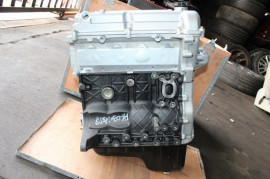Discovering the Inner Functions of a Compact Car's Engine System
As chauffeurs, we commonly take for provided the complex processes that happen within the confines of our lorry's engine system. In this exploration of a portable automobile's engine system, we will decipher the internal functions of this mechanical harmony, dropping light on the secrets that drive us onward on our everyday journeys.
Burning Process Review
The combustion procedure in a portable lorry's engine system is a critical device that effectively converts fuel right into energy to power the lorry. This process occurs within the burning chamber of the engine, where gas and air mix, spark, and produce controlled explosions. The burning procedure includes 4 primary phases: intake, exhaust, power, and compression.
Throughout the intake phase, the piston moves downward, attracting a blend of air and fuel into the combustion chamber. The following phase, compression, includes the piston moving up, pressing the air-fuel mixture to raise its strength. Subsequently, in the power stage, the trigger plug fires up the compressed mix, leading to a rapid development of gases that compels the piston back down. This downward activity produces the power required to drive the vehicle. Finally, in the exhaust stage, the burned gases are gotten rid of from the combustion chamber through the exhaust shutoff, preparing the chamber for the following cycle. This cyclic burning procedure is basic to the procedure of a compact vehicle's engine system, guaranteeing effective power conversion for propulsion.
Piston and Cyndrical Tube Communication

The piston's specific fit within the cylinder is important for keeping optimal compression and stopping energy loss during burning. Limited clearances in between the piston and cyndrical tube wall surfaces ensure reliable securing, enabling the piston to move smoothly without permitting gases to leak past. Appropriate lubrication is additionally vital to decrease rubbing and wear between these components, improving long life and efficiency.
Furthermore, the design and products utilized in making the piston and cylinder effect engine effectiveness and sturdiness. Modern engines usually utilize light-weight yet durable materials like aluminum alloys for pistons and cyndrical tube linings to minimize inertia and improve thermal effectiveness. Overall, the unified communication in between the piston and cyndrical tube is fundamental to the engine's functionality and overall performance.
Fuel Injection System Performance
Fuel shot systems in portable lorry engines play a crucial duty in exactly providing fuel to the burning chamber for reliable and regulated ignition. The gas shot system functions by injecting fuel right into the combustion chamber at the ideal moment throughout the engine's operation (opel corsa engine). This accurate timing makes sure that the fuel mixes equally with the air for correct burning, causing enhanced fuel effectiveness and reduced exhausts
There are mainly two kinds of fuel shot systems used in small lorry engines: port gas injection (PFI) and straight gas shot (DFI) PFI systems inject gas right into the intake port before the consumption shutoff, while DFI systems infuse fuel directly into the burning chamber. Both systems have their benefits, with DFI providing better gas atomization and PFI providing a more economical option.
Recognizing Engine Air Conditioning Devices
Reliable procedure of a small car's engine depends greatly on the effectiveness of its cooling systems. The air conditioning system in a portable lorry commonly consists of numerous elements working with each other to control the engine temperature level. Understanding these engine cooling systems is crucial for preserving the performance and durability of a portable lorry's engine system.

Exhaust System Parts Explained
The ideal functioning of a portable vehicle's engine cooling mechanisms depends on a complementary system called the exhaust system, which comprises different vital components for ensuring reliable exhausts and engine performance. The exhaust system consists of parts such as the exhaust manifold, catalytic converter, Continue muffler, and tailpipe. The exhaust manifold accumulates exhaust gases from the engine's routes and cyndrical tubes them to the catalytic converter. The catalytic converter after that converts unsafe pollutants in the exhaust into less harmful discharges prior to launching them via the muffler and tailpipe.
One important part of the exhaust system is the oxygen sensor, which keeps track look at this web-site of the oxygen degrees in the exhaust gases to assist regulate gas usage and guarantee optimal engine performance. opel corsa engine. Furthermore, the resonator might exist in some exhaust systems to lower noise levels. Generally, the exhaust system plays a crucial role in keeping engine efficiency, minimizing unsafe discharges, and guaranteeing a quieter driving experience for portable automobile proprietors

Final Thought
Finally, the portable automobile's engine system is a complex combination of parts that interact to facilitate the combustion process, transform fuel into energy, and expel waste gases. Understanding the internal functions of the engine system, consisting of the piston and cylinder interaction, gas shot system, engine air conditioning devices, and exhaust system components, is vital for keeping ideal performance and efficiency of the automobile.
The combustion process in a portable vehicle's engine system is a vital system that efficiently converts fuel right into energy to power the automobile.Fuel injection systems in portable automobile engines play a crucial function in specifically supplying gas to the combustion chamber go now for reliable and regulated ignition.There are mainly 2 types of gas shot systems used in small automobile engines: port fuel shot (PFI) and straight fuel injection (DFI) Comprehending these engine air conditioning systems is crucial for preserving the performance and long life of a small vehicle's engine system.
The optimal performance of a compact lorry's engine air conditioning systems depends on a complementary system known as the exhaust system, which makes up various essential parts for making sure efficient exhausts and engine performance.